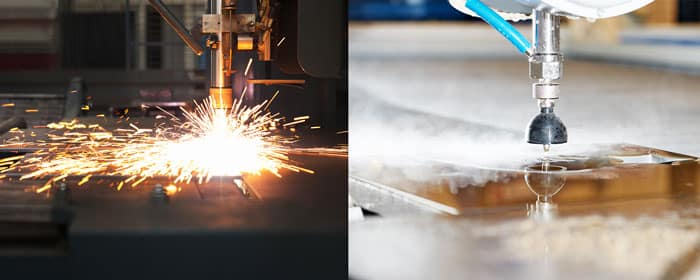Due to the unique properties of water, CNC waterjet cutting proves to be more advantageous than Plasma or Laser cutting for many applications. Remarkably, waterjet cutting generates very little heat. A waterjet machine uses water mixed with an abrasive to cut by erosion—extremely high pressures force this “liquid sandpaper” downwards depositing the eroded material into the tank of the table. Generating no edge pressure to make a cut, this unique process puts little strain on the material. Minimal heat prevents micro-fracturing and preserves the integrity of metals whose intrinsic properties would otherwise be altered if cut at high heat. Plasma and Laser cutting processes result in a Heat Affected Zone (HAZ) evidenced by rough, sharp edges. Objects cut on a waterjet can have smooth, finished edges without secondary processing required. This reduces the time and effort required to complete your project. Robo-Jet utilizes a Kerf compensation head to reduce the width of the material removed to make a cut. It ensures greater overall dimensional accuracy of complex parts. This increases cut speed and reduces waste, in turn decreasing cycle times and part cost. More accurate than the plasma alternative, CNC waterjet cuts with average tolerances of +/- .005″. Robo-Jet’s CNC machine typically has room to cut up to 8″ thick material whereas the Plasma or Laser alternative can only cut material 2-3 inches in depth. Incredibly, a waterjet cuts materials such as plywood, hardwoods, plastics, laminates, and stone all with quality and precision. Robo-jet can cut almost anything, reference our materials page to learn about all the possibilities, or contact us today to get started!
We are your waterjet cutting specialist!
location_on
208-391-7575
2025 Century Way, Boise ID 83709

